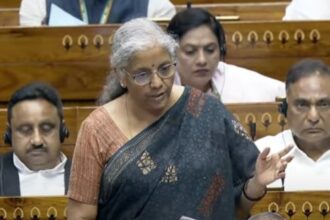The Navi Mumbai Airport project, spearheaded by the Adani Group, is a cornerstone in India’s infrastructure expansion and reflects the nation’s broader ambitions to enhance its global aviation footprint.
Earlier today Karan Adani tweeted : Today, Terminal 3 opens at CCSIA, making history on UP’s journey to a trillion-dollar economy. Inside the first Integrated Terminal developed by #Adani echoes Aminabad, Hazratganj & the sacred Ganga to welcome passengers in Andaz-E-Lucknow. Another world-class airport for #India!
Adani Group will demolish Mumbai airport’s terminal 1 (T1) next year, a few months after the Navi Mumbai airport becomes operational in March 2025. A new terminal will take the place of T1 in about three years from when construction work begins, Adani Ports MD Karan Adani told TOI on Sunday. Besides, he said T2 and the proposed new T1 are planned to be linked through an underground tunnel, in a move that is expected to ease passenger movement.
Here are some insightful aspects of the project that have not been widely highlighted:
Geographical Advantage: Strategically located, the Navi Mumbai Airport is positioned to serve as a pivotal international transit hub, potentially rivaling established airports in Dubai, London, Frankfurt, and Singapore due to India’s central location1.
Massive Aircraft Orders: Supporting the airport’s potential as a major hub, Indian airlines like Air India Ltd., IndiGo, and newcomer Akasa have collectively placed orders for over 1,100 aircraft. This massive fleet expansion aligns with the country’s vision to accommodate the anticipated surge in air travel1.
Nationwide Airport Expansion: The Navi Mumbai Airport is part of a larger initiative, with India investing $12 billion to construct more than 72 new airports by 2025. This ambitious plan aims to significantly boost the nation’s aviation infrastructure1.
Economic Revitalization: Beyond its immediate impact on travel, the airport is expected to be a catalyst for economic growth in the region, creating jobs, stimulating tourism, and fostering business development1.
Sustainability Focus: The Adani Group is committed to sustainability, integrating cutting-edge technology to minimize the environmental impact of the Navi Mumbai Airport. This approach sets a new standard for future infrastructure projects in India1.
These elements underscore the transformative potential of the Navi Mumbai Airport, not just for the city but for the entire country’s aviation landscape.
Environmental Impact of Adani Airport
The Navi Mumbai Airport project has raised several environmental concerns, primarily due to its location in an ecologically sensitive area. Here are some of the key environmental impacts associated with the project:
Mangrove Destruction: The construction of the airport is expected to damage around 477 acres of mangroves, which are crucial for coastal protection, biodiversity, and as a carbon sink.
Diversion of Rivers: The project involves the diversion of two rivers, which could potentially disrupt the natural flow, affect the water quality, and have a cascading effect on the ecosystem.
Loss of Mudflats: About 1,000 acres of mudflats are also likely to be affected. Mudflats play a vital role in the ecosystem as breeding grounds for fish and as feeding grounds for migratory.
Air Pollution: There are concerns about increased air pollution levels due to construction activities and the subsequent operation of the airport. This includes the release of particulate matter (PM10, NOx, SO2, NH3, CO, HC) and other pollutants1.
Displacement of Communities: The development has led to the eviction of several families, raising issues about the rehabilitation of residents and the impact on their lives.
Impact on Wildlife: The airport site encompasses areas that are home to diverse wildlife, and the construction could lead to habitat destruction and disturbance to the animals living in these habitats.
The Environmental Impact Assessment (EIA) for the project has been conducted, and while it outlines measures to mitigate some of these impacts, there are ongoing discussions and debates about the adequacy and effectiveness of these measures.






